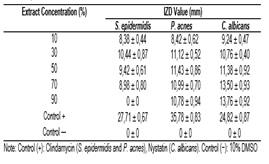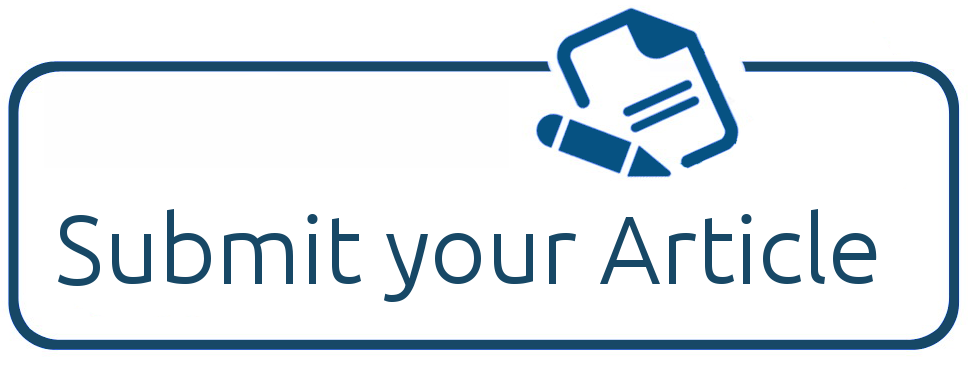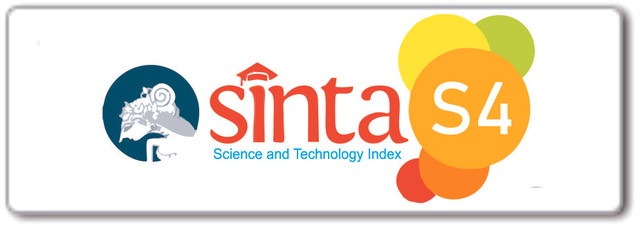Evaluation of the Antimicrobial Activity of Ethanol Extract from Galangal Rhizome (Kaempferia galanga L.) in the Purbalingga Accession
Abstract
Galangal (Kaempferia galanga L.) is a medicinal plant known for its antimicrobial properties. Its rhizome contains bioactive compounds such as alkaloids, flavonoids, tannins, phenols, quinones, steroids, and triterpenoids, which have been reported to inhibit the growth of Staphylococcus epidermidis, Propionibacterium acnes, and Candida albicans. This study aimed to evaluate the antimicrobial activity of the ethanol extract of galangal rhizome from the Purbalingga accession. The antimicrobial activity was assessed using the disc diffusion method to determine the inhibition zone diameter (IZD), while the minimum inhibitory concentration (MIC) and minimum killing concentration (MKC) were determined using solid agar dilution. Extract concentrations of 10%, 30%, 50%, 70%, and 90% were tested for IZD. Clindamycin was used as a positive control for S. epidermidis and P. acnes, while nystatin was used for C. albicans; 10% DMSO served as the negative control. MIC values were evaluated at concentrations of 1.25%, 2.5%, 5%, and 10%. The ethanol extract inhibited the growth of S. epidermidis at a concentration of 10%, with an IZD of 8.38 mm. The inhibition zones for P. acnes and C. albicans were 8.42 mm and 9.24 mm, respectively. The MIC was 10% for S. epidermidis and 2.5% for both P. acnes and C. albicans. The MKC for P. acnes and C. albicans was determined to be 5%. The ethanol extract of K. galanga rhizome from the Purbalingga accession exhibits antimicrobial potential against S. epidermidis, P. acnes, and C. albicans, suggesting its potential use in antimicrobial applications
Downloads
References
Agustina, W., & Handayani, D. (2017). Skrining fitokimia dan aktivitas antioksidan beberapa fraksi dari kulit batang jarak (Ricinus communis L.). Jurnal Pendidikan dan Ilmu Kimia, 1(2),117-122. doi: https://doi.org/10.33369/atp.v1i2.3529.
Al Fajrie, R.N., & Nurhayani. (2023). Antibacterial effectiveness test of kencur rhizome ethanol extract (Kaempferia galanga L.) against Escherichia coli and Staphylococcus aureus. Indonesian Journal of Medical Reviews, 3(4), 453-457. doi: https://hmpublisher.com/index.php/OAIJMR/article/view/336.
Angin, Y., Purwaningrum, Y., Asbur, Y., Rahayu, M.S., & Nurhayati, N. (2019.) Pemanfaatan kandungan metabolit sekunder yang dihasilkan tanaman pada cekaman biotik. Agriland: Jurnal Ilmu Pertanian, 7(1), 39 – 47. doi: https://doi.org/10.30743/agr.v7i1.3471
Annisa, R., Roebiakto, E., & Lutpiatina, L. (2016). Potensi ekstrak rimpang kencur (Kaempferia galanga L.) menghambat pertumbuhan Candida albicans. Medical Laboratory Technology Journal, 2(2), 70-76. doi: https://doi.org/10.31964/mltj.v2i2.94
Asrianti, N.I., Setyaningrum, T., Setiawati, Y., & Widia, Y. (2024). Factors that influence the onset of acne vulgaris: Retrospective Study. Berkala Ilmu Kesehatan Kulit dan Kelamin, 36(2), 98-103. DOI: 10.20473/bikk.V36.2.2024.98-103.
Chaugule, R.S., & Barve, R.S. (2023). Role of herbal medicines in the treatment of infectious diseases. Vegetos, 37, 41-51. DOI: 10.1007/s42535-022-00549-2.
Dash, P.R., Nasrin, M., & Ali, M.S. (2014). In vivo cytotoxic and in vitro antibacterial activities of Kaempferia galanga L. Journal of Pharmacognosy and Phytochemistry, 3(1), 172-177.
Dewi, C., Utami, R., & Riyadi, N.H. (2012). Aktivitas antioksidan dan antimikroba ekstrak melinjo (Gnetum gnemon L.). Jurnal Teknologi Hasil Pertanian, 5(2), 74 – 81. ISSN: 1979-0309 (Print), 2614-7920 (Online).
Elya, B., Kusuma, I.M., Jufri, M., & Handayani, R. (2016). Antibacterial tests against acne in vitro, the physical stability and patch using cream containing ethyl p-methoxycinnamate extracted from Kaempferia galanga L., rhizoma. Research Journal of Medicinal Plant, 10(8), 426-434. doi: https://doi.org/10.3923/rjmp.2016.426.434
Fitriani, I.R., Fitriana., & Nuryanti, S. (2023). Aktivitas antibakteri ekstrak etanol daun ketepeng cina (Cassia alata L.) terhadap beberapa bakteri penyebab infeksi kulit. Makassar Natural Product Journal, 1(4), 22-28. https://journal.farmasi.umi.ac.id/index.php/mnpj/article/view/8.
Gayathiri, E., Bharathi, B., & Priya, K. (2018). Study of the enumeration of twelve clinical important bacterial populations at 0.5 McFarland standard. International Journal of Creative Research Thought (IJCRT), 6(2), 880-893. https://www.ijcrt.org/papers/IJCRT1807341.pdf.
George, R.P., & Hima, V. (2019). Antimicrobial activity of solvent extracted Kaempferia galanga rhizomes. International Journal of Recent Scientific Research (IJRSR), 10(08), 34508-34510.
Gunawan., & Gan, S. 2016. Farmakologi dan Terapi. Jakarta: Departemen Farmakologi dan Terapeutik Fakultas Kedokteran UI.
Hossain, T.J. (2024). Methods for screening and evaluation of antimicrobial activity: A Review of protocols, advantages, and limitations. European Journal of Microbiology and Immunology, 14(2), 97-115. DOI: 10.1556/1886.2024.00035
Humaida, R. (2014). Strategi to handle resistensi of antibiotics. Journal of Mayority, 3(7), 113-120. Faculty of Medicine, Lampung of University, Lampung.
Indryani, V., Chiuman, L., Wijaya, L.L., Lister, G., & Grandis, L. (2020). Antibacterial effect of Curcuma zedoaria extract on Bacillus cereus and Staphylococcus epidermidis. Althea Medical Journal, 7(1), 6-10. DOI: 10.15850/amj.v7n1.1886.
Julianto. T.S. 2019. Buku Ajar: Fitokimia Tinjauan Metabolit Sekunder dan Skrining Fitokimia (cet I). Yogyakarta: Universitas Islam Indonesia.
Kalaiselvi, V., Binu, T.V., & Radha, S,R. (2016). Preliminary phytochemical analysis of the various leaf extracts of Mimusops elengi L. South Indian Journal of Biological Science, 2(1), 24-29. DOI: 10.22205/sijbs/2016/v2/i1/100337.
Khairullah, A.R., Solikhah, T.I., Ansori, A.N.M., Hanisia, R.H., Puspitarani, G.A., Fadholly, A., & Ramandinianto, S.C. (2021). Medicinal importance of Kaempferia galanga L. (Zingiberaceae): A comprehensive review. Journal of Herbmed Pharmacology, 10(3), 281-288. DOI: 10.34172/jhp.2021.32.
Khusuma, A., Safitri, Y., Yuniarni, A., & Rizki, K. (2019). Uji teknik difusi menggunakan kertas saring media tampung antibiotik dengan Escherichia coli sebagai bakteri uji. Jurnal Kesehatan Prima, 13(2), 151-155. DOI: 10.32807/jkp.v13i2.257.
Koeth, L.M., & Miller, L.A. (2023). Antimicrobial Susceptibility Test Methods: Dilution and Disc Diffusion Methods. 11th, Chapter 71, American Society for Microbiology, Wiley online Library: ClinMicroNow. DOI for this chapter is 10.1128/9781683670438.MCM.ch74.
Lestari, Y., Ardiningsih, P., & Nurlina. (2016). Aktivitas antibakteri Gram positif dan negatif dari ekstrak dan fraksi daun nipah (Nypa fruticans Wurmb.). JKK Jurnal Kimia Khatulistiwa , 5(4), 1 – 8. ISSN 2303-1077
Magani, A.K., Tallei, T.E., & Kolondam, B.J. (2020). Uji antibakteri nanopartikel kitosan terhadap pertumbuhan bakteri Staphylococcus aureus dan Escherichia coli. Jurnal Bios Logos, 10(1), 7. https://doi.org/10.35799/jbl.10.1.2020.27978.
Mioc, M., Prodea, A., Racoviceanu, R., Mioc, A., Ghiulai, R., Milan, A., Vaicu, M., Mardale, G., & Soica, C. (2022). Recent advances regarding the molecular mechanism of triterpenic acid: A review (part II). International Journal of Molecular Sciences, 23(8896), 1-48. DOI: 10.3390/ijms23168896.
Noor, F. (2017). Uji aktivitas antibakteri ekstrak etanol rimpang kencur (Kaempferia galanga L.) pada bakteri Bacilus Subtilis dan Escherichia coli. Jurnal of Current Pharmaceutical Sciences, 1(1), 36-41.
Nurdyansyah, F., Widyastuti, D. A., & Mandasari, A. A. (2019). Karakteristik simplisia dan ekstrak etanol kulit petai (Parkia speciosa) dengan metode maserasi. Prosiding Seminar Nasional Sains dan Enterpreneurship VI, 1(1), 1 – 5. ISBN: 978-602-99975 3 8.
Omar, M.N., Hasali, N.H.M., Alfarra, H.Y., Yarmo, M.A., & Zuberdi, A. M. (2014). Antimicrobial activity and microbial transformation of ethyl p-methoxycinnamate extracted from Kaempferia galanga. Oriental Journal of Chemistry, 30(3), 1037-1043. doi: http://dx.doi.org/10.13005/ojc/300315
Pasaribu, D.M.R., Sudrajat, S.E., Buarlele. H.J. (2018). Aktivitas zona hambat ekstrak daun kemangi (Ocimum americanum) terhadap Candida albicans. Jurnal Kedokteran Meditek, 24(68), 50-59. DOI: 10.36452/jkdoktmeditek.v24i68.1702.
Preetha, T.S., Hemanthakumar, A.S., & Krishnan, P. N. (2016). A comprehensive review of Kaempferia galanga L. (Zingiberaceae): A high sought medicinal plant in Tropical Asia. Journal of Medicinal Plants Studies, 4(3), 270-276. ISSN 2320-3862.
Primawati, S.N., & Jannah, H. (2019). Pengaruh metode ekstraksi kencur (Kaempferia galanga L.) terhadap pertumbuhan Staphylococcus aureus. Biosintesis Jurnal Ilmiah Biologi, 7(2), 177-181. DOI:10.33394/bjib.v7i2.2377
Rafika, L., Masda, A., Rastina, Maryulia, D., & Nurliana. (2020). The isolation of Staphylococcus epidermidis bacteria in white snapper salted fish (Lates calcalifer) from Sibolga city, North Sumatera province. The Indonesian Journal of Public Health, 7(1), 44-50. doi: https://doi.org/10.35308/j-kesmas.v7i1.1918.
Rahayu, K.D.A., Jirna, I. N., & Burhanuddin. (2019). Uji angka kapang khamir dan identifikasi Aspergillus spesies pada jamu kunyit di Denpasar Selatan. Meditory, 7(1), 17-26. doi: https://doi.org/10.33992/m.v7i1.642
Rajendra, C.E., Magadum, G.S., Nadaf, M.A., Yashoda, S.V., & Manjula, M. (2011). Phytochemical screening of the rhizome of Kaempferia galanga. International Journal of Pharmacognosy and Phytochemical Research, 3(3), 61-63. ISSN: 0975 4873.
Romadhona, I., & Permatasari, F.S. (2024). Herbal Medicine: Bridging traditional pharmacy with modern science. International Journal of Pharmaceutical Science & Research, 9(1), 40-44. https://www.pharmacyjournal.net/assets/archives/2024/vol9issue1/9011.pdf.
Samputri, Revina, D., Angeline, N., & Ratna, W. (2020). Uji aktivitas antibakteri ekstrak etanol biji kamandrah (Croton tiglium L.) terhadap pertumbuhan Salmonella typhi. Herb-Medicine Journal, 3(3), 19-33. DOI: 10.30595/hmj.v3i3.6393.
Senduk, T.W., Montolalu, L.A.D.Y., & Dutulong, V. (2020). The rendement of boiled water extract of mature leaves of mangrove Sonneratia alba. Jurnal Perikanan dan Kelautan Tropis, 11(1), 9. doi: https://doi.org/10.35800/jpkt.11.1.2020.28659.
Sousa, F., Nascimento, C., Ferreira, D., Reis, S., & Costa, P. (2023). Reviving the interest in the versatile drug nystatin: A multitude of strategies to increase its potential as an effective and safe antifungal agent. Advanced Drug Delivery Reviews. 199, 1-35. DOI: 10.1016/j.addr.2023.114969.
Subaryanti, Sulistyaningsih, Y. C., Iswantini, D. & Triadiati. (2021). Essential oil components, metabolite profiles, and idioblast cell densities in galangal (Kaempferia galanga L.) at different agroecology. Agrivita: Journal of Agricultural Science, 43(2), 245-261. doi: http://doi.org/10.17503/agrivita.v43i2.2631.
Susanto, A.A., Silvia, E., Utia, A., & Hamzah, M.S. (2022). Efektivitas antibiotic klindamicin terhadap bakteri Propionibacterium acnes dengan metode difusi pada pasien acne vulgaris. Medula, 12(2), 374-377. DOI: 10.53089/medula.v12i2.351.
Sweileh, W.M. (2021). Global research publications on irrational use of antimicrobials: Call for more research to contain antimicrobial resistance. Globalization and Health, 17(94), 1-12. DOI: 10.1186/s12992-021-00754-9.
Wang, S.Y., Zhao, H., Xu, H.T., Han, X.D., Wu, Y.S., Xu, F.F., Yang, X.B., Goransson, U., & Liu, B. (2021). Kaempferia galanga L.: Progresses in phytochemistry, pharmacology, toxicology and ethnomedicinal uses. Frontier Pharmacology, 12. DOI: 10.3389/fphar.2021.675350.

Copyright (c) 2025 Subaryanti Subaryanti, Siti Musrifah, Saiful Bahri

This work is licensed under a Creative Commons Attribution-NonCommercial-ShareAlike 4.0 International License.
Authors who publish with BIOEDUPAT: Pattimura Journal of Biology and Learning agree to the following terms:
- Authors retain copyright and grant the journal right of first publication with the work simultaneously licensed under a Creative Commons Attribution License (CC BY-NC-SA 4.0) that allows others to share the work with an acknowledgment of the work's authorship and initial publication in this journal.
- Authors are able to enter into separate, additional contractual arrangements for the non-exclusive distribution of the journal's published version of the work (e.g., post it to an institutional repository or publish it in a book), with an acknowledgment of its initial publication in this journal.
- Authors are permitted and encouraged to post their work online (e.g., in institutional repositories or on their website) prior to and during the submission process, as it can lead to productive exchanges, as well as earlier and greater citation of published work.








 This work is licensed under a
This work is licensed under a 